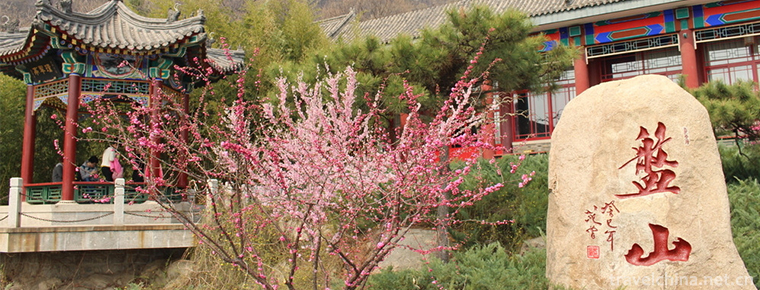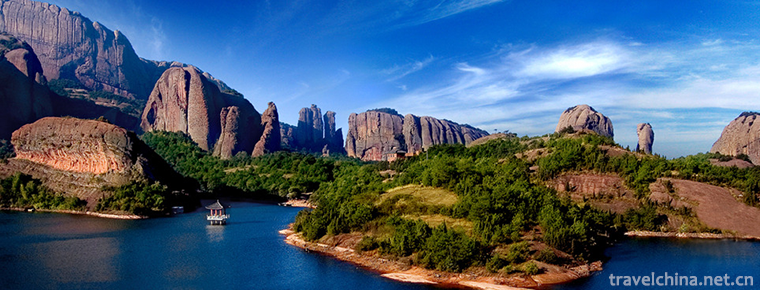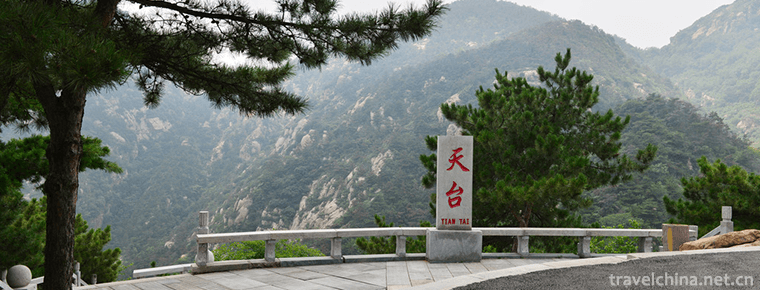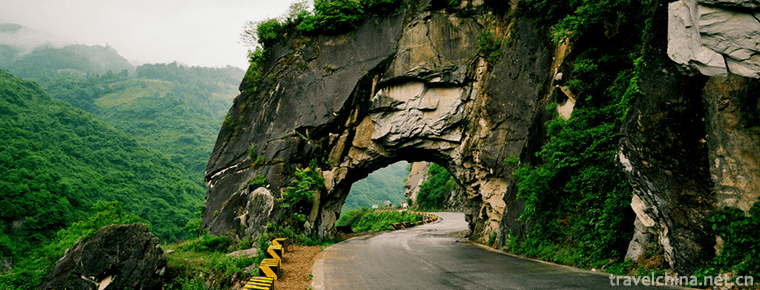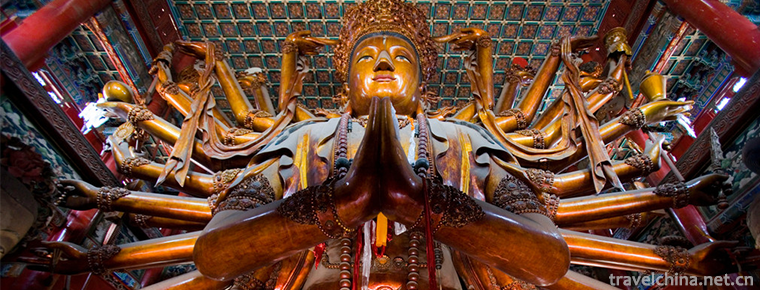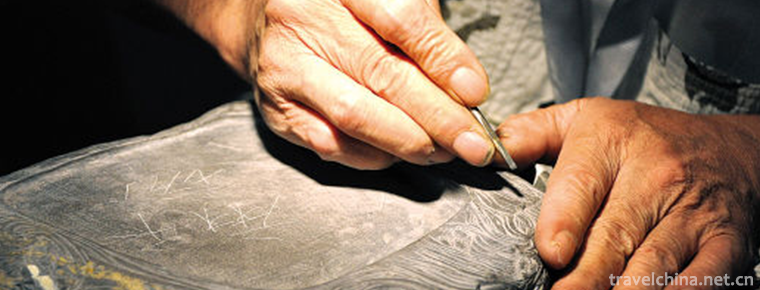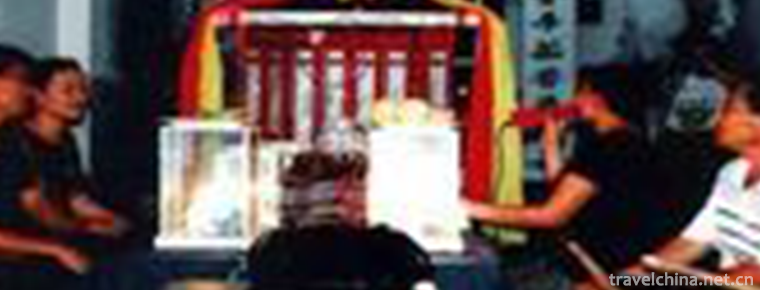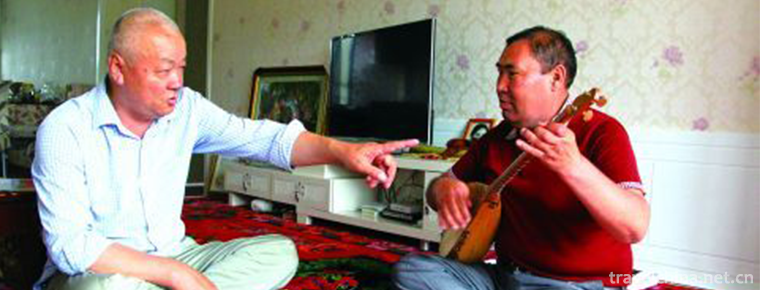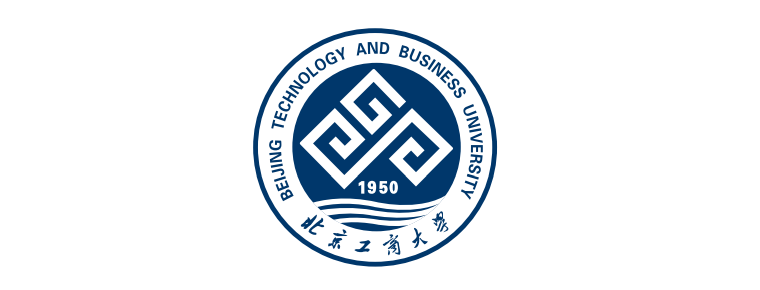Shanghai Museum of Natural History
Address: 399 Shanhaiguan Road, Jing'an District, Shanghai
Official website: http://www.snhm.org.cn/
The Shanghai Museum of Nature (Shanghai Science and Technology Museum Natural Branch) is one of the largest natural museums in China. Located in the center of Shanghai, Address: 260 Yan'an East Road, Huangpu District. The building is of British classical style and covers an area of 12880 square meters.
The existing organizational settings include: zoology department, botany department, geology and Paleontology department, anthropology department, astronomy department, science education popularization department, information department, art design department, specimen preparation center and "Nature and Man" magazine. Shanghai Museum of Natural History has a collection of nearly 270,000 specimens. Among them, "Yellow River Ancient Elephants" and "Mamenxi Dinosaurs" are called "treasures of town halls". In 2014, the nearly 50-year-old Shanghai Museum of Natural History officially closed on May 12, 2014. The new museum moved to Jing'an Sculpture Park in Jing'an District and opened on April 19, 2015.
Development history
Shanghai Museum of Natural History was established in 1956. On November 1, 1956, the Shanghai People's Committee approved the formation of the Preparatory Committee for Shanghai Museum of Natural History by 12 people, including Jin Zhonghua. On December 27, the first meeting of the Preparatory Committee confirmed that the nature of the museum was "natural history" and was named "Shanghai Natural History Museum". Its task was to prepare five professional museums for animals, plants, human beings, astronomy and geology. Jin Zhonghua was elected as the chairman and Chen Yusun, Lu Yudao and Ren Hongjun as the vice-chairmen.
When the Preparatory Committee was first established, it was subordinated to the Shanghai Cultural Bureau and the Shanghai Science and Technology Popularization Association; on September 12, 1962, it was subordinated to the Shanghai Science and Technology Commission and the Shanghai Science and Technology Association; and in June, 1988, it was subordinated to the Shanghai Academy of Sciences.
The Shanghai Museum of Natural History Preparatory Office is located in Mingdi 2, Huqiu Road 20, Chongqing South Road, Shanghai Insect Research Institute, Chinese Academy of Sciences, Nanchang Road successively. In August 1958, it moved to 260 Yan'an East Road (formerly the Chinese Business Gauze Exchange, the first reinforced concrete building in Shanghai). It is a six-story British classical style building with an area of more than 2600 square meters and a building area of more than 12,000 square meters. Rice. In February 1960, Guo Moruo, President of the Chinese Academy of Sciences, wrote the name of the Museum of Nature in Shanghai. Now most of the exhibits have been moved to the natural museum in Jing'an District, which is called "Natural Museum Branch".
Founded in 1956, the Shanghai Museum of Natural History, formerly the Sinian Museum founded in 1868 and the Asian Cultural Society founded in 1874. Shanghai Museum of Natural History has always been precious for its collection history of more than 100 years. The Shanghai Museum of Natural History has a collection of nearly 270,000 specimens. Among them, the ancient elephants of the Yellow River and the Mamenxi dragon fossils are called "treasures of the town hall".
In 2001, the Shanghai Museum of Natural History was formally incorporated into the Shanghai Science and Technology Museum. Because of its narrow space and backward display mode, it decided to relocate the new museum. Wang Xiaoming, curator of Shanghai Science and Technology Museum, said that the new museum is located in Jing'an Sculpture Park, Shanghai, with a total floor area of 45,000 square meters. Construction started in June 2009 and is scheduled to be completed by the end of 2012.
In order to meet the needs of exhibition, expand the number of exhibits and improve the quality of collection, the new museum will collect 1 430 specimens involving minerals, Paleontology and living organisms from home and abroad for the purpose of "protecting nature and showing the course of change".
At present, it has been completed and opened to the public.
Venue features
Design concept
The theme of Shanghai Museum of Nature is "Nature, Man and Harmony". Through the three main lines of "evolutionary movement", "picture scroll of life" and "epic of civilization", it presents ten permanent exhibition areas, including the mystery of origin, the river of life, the way of evolution, the treasure of the earth, the colourful life, the ecological phenomena, the wisdom of survival, the geographical location of man, the story of Shanghai, the road to the future, and one temporary exhibition hall, 4D. Cinema, Exploration Center and other supporting functional areas.
High-tech Show
More than 11,000 specimens from seven continents were displayed, including nearly 1,000 rare specimens; nearly 1,500 square meters of step-by-step restoration scenes to vividly reproduce the vibrant African prairie; a large sample array of "spanning time and space gathering" more than 200 animal and plant stars at home and abroad; and five immersion theaters such as "escape from the Cretaceous" to reproduce major events in the history of evolution. Twenty-six groups of restored eco-scenic boxes, such as "Window of Nature", pay tribute to the classical exhibition of the Museum of Nature; 400 visual media and an online museum system to meet the public needs in the age of self-media; 1500 groups of scientific paintings to visually display the combination of art and science; 300 square meters of living culture area, zero-distance touch nature; 1200 square meters of "exploration center" to construct the view. A paradise of discovery, experimentation and dialogue; a multimedia show of "natural epic" to create an artistic feast integrating science, technology and humanities.
Comprehensive characteristics
The Shanghai Museum of Nature is a comprehensive museum of paleontology, botany, zoology, anthropology, geology and astronomy. The main task is to carry out scientific research and social education on the basis of collecting natural specimens and books. On January 27, 1960, the Zoology Library opened in its headquarters; in 1984, the Botany Library was built at 1102 Longwu Road, covering an area of more than 1800 square meters, a total of six floors, with a construction area of 3065 square meters. The exhibition covers an area of more than 4000 square meters, which includes three parts: ancient animal history, ancient human history and modern animals. Modern animals also include invertebrates, fish, amphibians, reptiles, birds and mammals. In addition to the Shanghai area ancient corpse exhibition, the marine animal exhibition has nine exhibition rooms. The exhibition area of Botany Library is more than 2,200 square meters, which covers the evolution of plants.
The whole exhibition is arranged in the order of low to high, reflecting the course of biological evolution, representing species by various phylums, classes and purposes of the animal kingdom, and equipped with various ecological scenic boxes. It not only scientifically shows the basic characteristics of various animals, but also vividly reflects their habitat and their close relationship with human beings. Many of them are special products of our country and second-class protected animals. In addition, the museum often holds various special exhibitions, animal specimen preparation and fossil restoration demonstrations, providing a variety of services for the audience.
Opening of new library
The new Shanghai Museum of Nature is located in Jing'an Sculpture Park. It is designed by PERKINS + WILL and the Institute of Architectural Design of Tongji University. The total building area of the new Shanghai Museum of Nature is 45086 square meters. Among them, there are three floors above ground, 18 meters high; two floors below ground, 15 meters deep.
The history of Shanghai Museum of Natural History can be traced back to the Xujiahui Museum (renamed Sinian Museum in 1933) founded by Pierre Heude, a French Catholic priest, and the Shanghai Museum of the Asian Cultural Fair run by the British. After several rounds, amalgamation, reconstruction and renewal, the name of the museum was constantly changing, and it was integrated into the Shanghai Museum of Nature after liberation. It has become one of the largest and most influential natural museums in China. In 2012, it said goodbye to the increasingly narrow and crude old building on Yan'an East Road and moved into the giant "Nautilus shell" in the northwest of Jing'an Sculpture Park (Shanhaiguan Road - North-South Elevated Road - Beijing West Road - Shimen Second Road), becoming a world-class popular science building in Shanghai.
According to reports, the overall inspiration of the building comes from the shell form of Nautilus. This simple and classical biological form has existed on the earth for millions of years, implying the sacred mission of museum people to "manage natural heritage and protect the earth's homeland". The spiral green roof "rises slowly", and the museum's functional area is under this long green belt. A cleverly enclosed elliptical pool has become the central focus of the whole building's visiting streamline. It symbolizes that 71% of the earth's surface is covered by water. The water surface brings ripple, texture, motion, sound and reflection of water waves, which is part of the museum's experience. The pavement and exterior walls of the museum are made up of stone patterns in many directions, reminiscent of the earth's geological tectonic layers. The Island flora is scattered ups and downs, which is called the "primitive forest" of the new museum of Shanghai Museum of Natural History. After nightfall, "forest" is illuminated by light and reflects light, reducing the need for outdoor lamp posts. Shanghai Museum of Natural History will not only conform to the Energy Conservation Design Standards for Public Buildings, but also become a demonstration project for energy conservation buildings in Shanghai, aiming to meet the three-star standard of national green building evaluation mark.
Start Construction and Build "Memory
Wall"
The commencement ceremony was concise and chic -- "City Memory Wall" was built by city leaders and representatives of scientists. "City Memory Wall" implies the Shanghai Museum of Natural History yesterday, today and tomorrow, which is composed of six far-reaching sculpture bricks. Each brick records a story from the development of Shanghai Museum of Natural History. They are: Brown-winged Rhododendron collected in 1870, the earliest collection of specimens of natural history in Shanghai Museum of Natural History; the skeleton of baleen whale, one of the core exhibits of Shanghai Museum of Natural History; the big Rhododendron and Songjiang perch, which record the development of Shanghai City and the changes of environment; The new species discovered by two generations of plant experts in the Museum of Natural History: Clove Leaf; Mamen Xilong, one of the main exhibits of Shanghai Museum of Natural History on its first overseas tour; the living fossil of nautilus, the witness of 500 million years'evolution history and the source of inspiration for the shape of the new museum. When the last brick is inlaid, the model of the new museum of Shanghai Museum of Natural History appears.
The new pavilion started its trial operation on December 18, 2014 and was officially opened on April 19, 2015.
Visiting information
Travel time
As a metropolis in the world, Shanghai does not have strict seasonal restrictions, but every spring (March-May) Shanghai Qingpu plum blossom, Fengxian rape flower, Pudong peach blossom, Songjiang orchid bamboo shoots are opening in the second place, which is very beautiful. And autumn (September-November) is the best time to taste hairy crabs, so-called "autumn wind sounds, crab feet itch", at this time hairy crabs yellow feet, crab fat thick, crab meat beautiful, salivating.
Clothing Guide
In July and August, the temperature in Shanghai is relatively high and the air humidity is high, so it is not suitable for outdoor sports. Winter in January and February is the coldest season in Shanghai, at this time, we should pay attention to cold prevention and warmth preservation. In June and July, it is the plum rain season in Shanghai, and we should carry raingear when we go out.
Traffic information
The Shanghai Museum of Nature (Jing'an New Museum) is located in Jing'an Sculpture Park, Jing'an District, Shanghai.
Address: The main entrance of the Museum of Nature is located at 510 Beijing West Road, Jing'an District, Shanghai. The group disembarkation point is located at 399 Shanhaiguan Road, Jing'an District, Shanghai (near the second intersection of Shimen).
Rail transit mode: New Gate Road Station of Metro Line 1, Nanjing West Road Station of Metro Line 2 (Exit No. 2) and Natural Museum Station of Metro Line 13 (Exit No. 1).
Bus: Beijing West Road, Chengdu North Road (324 Road), Shimen Second Road, Shanhaiguan Road (41 Road, 301 Road, 324 Road, 927 Road), Shimen Second Road, Beijing West Road (104 Road), Taixing Road (15 Road, 927 Road, 955 Road), Chengdu North Road, Beijing West Road (36 Road, 109 Road, 869 Road, 933 Road, 952B, 974 Road), etc.









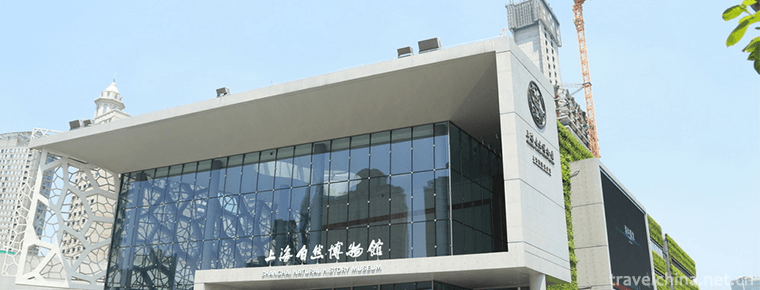
-
Tianjin Panshan Scenic Area
Tianjin Panshan Scenic Area, located 15 kilometers northwest of Jixian County, Tianjin City, covers an area of 106 square kilometers.
Views: 188 Time 2018-11-24 -
Guifeng Scenic AreaShangrao City Jiangxi Province
Guifeng Scenic Spot is located in the southwest of Yiyang County, Jiangxi Province, beside 320 National Highway, 311 Highway and Zhejiang-Jiangxi Railway.
Views: 143 Time 2018-12-08 -
Fanggan Ecological Scenic Area
Fanggan Eco-tourism Area is located in Luye Township in the north of Laiwu City. It is bordered by Jinan in the north, Zibo in the East and Taian in the west. National Highway 09 is very convenient fo.
Views: 293 Time 2019-01-12 -
Yanxiangdong Ecotourism Area of Hanjiang River
Yanxiangdong Ecotourism Scenic Spot of Hanjiang River is located in Shiquan, covering an area of 80 square kilometers, north of Qinling Mountains and south of Bashan Mountains.
Views: 199 Time 2019-01-13 -
Puning Temple
Puning Temple is located in Chengde City, Hebei Province. It was built in the Qianlong period of the Qing Dynasty. The first half of the temple is Han-style,.
Views: 155 Time 2019-02-07 -
Duan Inkstone Production Techniques
Duan inkstone production technology, Zhaoqing City, Guangdong Province, traditional handicraft, one of the national intangible cultural heritage..
Views: 150 Time 2019-04-28 -
Drum bowl song
Drum-pot song is a very ancient traditional form of music and art in Hubei Province of China. It originates from the traditional folk activities of "beating a pot as a drum, singing with the fune.
Views: 84 Time 2019-05-01 -
Toleau
The phonetic translation of "Toleau" in Kazakh means "lyric", "lyric poem", "revelation song" and "propaganda narration". It is one of the oldest form.
Views: 423 Time 2019-06-24 -
Legend of Yin Jifu
The "Yin Jifu Legend" which was listed as the first batch of intangible cultural heritage in Hubei Province, made a sensation forum about "Chinese poetry ancestor, Taishi Yin Jifu of th.
Views: 180 Time 2019-07-13 -
Beijing Technology and Business University
Beijing University of Industry and Commerce is a multi-disciplinary university in Beijing. It was approved by the Ministry of Education in June 1999 by the merger of Beijing Institute of Light Industr.
Views: 395 Time 2019-09-06 -
Da Zang Temple
Located in the north of malkang County, dazang temple is about 500 kilometers away from Chengdu City and is located in the deep mountains above 3000 meters above sea level. .
Views: 243 Time 2020-11-07 -
Natural resources of Panzhihua
Panzhihua is rich in hydropower resources, with theoretical reserves of more than 6.879 million kilowatts and exploitable capacity of 5.994 million kilowatts. The distribution of hydropower resources in Panzhihua area is concentrated, mainly distributed in the Jinsha River and Yalong River, as well as the tributaries of Anning River, Yongxing River and Tengqiao river..
Views: 293 Time 2020-12-14
